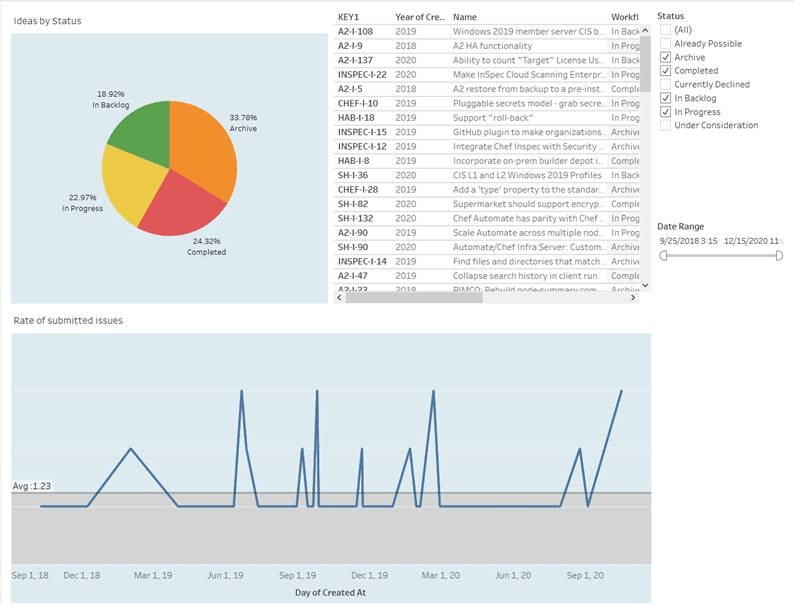The Secret Life of a Product Manager

This is the story of how product managers at Progress DataDirect creatively solve the question of "What's next?" with the tools they have at hand. It's a science and an art.
Product management is a mix of science and art. As a product manager myself, I know how tough it is to organize all the ideas, requests, enhancements, and fixes while prioritizing them appropriately with an eye on the business’ strategic north star, always thinking about what comes next.
When a product is in a mature lifecycle stage and has thousands of customers asking for hundreds of new functional improvements of any nature, the job of a product manager becomes even more complicated. Requests can be for a very specific customer use case or a generic application that affects many other customers too. Not to mention the ideas coming in from engineering, marketing, and sales.
With so much input, how do product managers … manage?
Let’s use one of the product teams at Progress as an example. We all use Aha! as our product management tool to track different ideas from various sources including our customer-facing ideas portal. One of the product teams wanted to build some BI reports around the customer and internal ideas logged in Aha! so that those can be better tracked, prioritized, planned, and delivered. Except there were already thousands of ideas in the product backlog and the team just didn’t have the bandwidth to prioritize them one by one.
The team needed a strategy to sort through the overflowing list of ideas. They decided the best way to prioritize was to see how ideas correspond to the team’s cross-functional quarterly and annual goals. Some of the goals were tied to strategic customer accounts, but there was no way to link those ideas and feature requests to the goals themselves. The team needed a way to tie the ideas in Aha! to the customer information in Salesforce. Though both Aha! and Salesforce have standard reports, they weren’t robust enough for this situation.
Fortunately for the team, the product managers realized we could solve the problem with our own in-house solution—Progress DataDirect. We decided to solve the problem by pulling the live Aha! ideas data along with live Salesforce customer information into Tableau using the Tableau generic JDBC connector facility with our Progress DataDirect JDBC Driver for Aha! and the Progress DataDirect JDBC Driver for Salesforce.
For technical details on how this integration was done, please read our tutorial Connect to Aha! from Tableau for Your Analytics and Reporting. Connectivity to Salesforce follows similar steps.
In the first phase, we focused on combining the data of Salesforce and Aha! to find:
- How many and which ideas we have from our mission-critical customers. This report can be even filtered to see which of these customers are due for renewal in the near term. This way the ideas had more context attached to them.
- The context of the use case, as sometimes the customer request does not have enough meaning. Combining the Salesforce data with Aha! ideas gives the 360-degree view of the what is being asked and by whom to understand what customers really want to achieve.
- The distribution between customer requests and some strategic initiatives like simplifying the sales cycle, improving user experience, and reducing overall support costs so that we can track and measure spending.
These reports helped us to perform relative prioritization and categorization of the ideas so that we could see which ideas to investigate first and distribute the ownership of such investigation across our small team of product owners and managers. These reports also helped us to track our progress on the investigations themselves.

Since implementing the reports, the team has not missed any requests from critical or soon-to-renew customers. The team now looks at all the important requests and organizes them to different categories like “planned,” “future considering,” “already exists” and “will not implement” to get a clear picture of what is planned, what will be planned and what will not be done at all.
But this is not the end of the story. In our next phases, the product management team will look at generating reports from historical data to track the customer use case trends and measure how much investment we have done for a particular customer’s request.
At Progress, we connected a reporting tool with live data from Aha! and Salesforce, but the DataDirect list of connectors is robust. The connections you make with your data are limited less by technology and more by imagination. There is so much data. It is up to us to use it to find answers to the most critical question a product manager can ask, “What’s Next?”
.jpg?sfvrsn=8bed08fe_0)
Avadhoot Kulkarni
Experienced senior product owner with expertise in the data connectivity and enterprise software industry. Working with Progress for 15-plus years. Skilled in agile methodologies, product development, product management, problem solving, and analytical skills. Certified SAFe Agile Product Leader (owner) and certified from pragmatic marketing. Strong technical software product development background with an M. Tech degree from Indian Institute of Information Technology, Allahabad.
